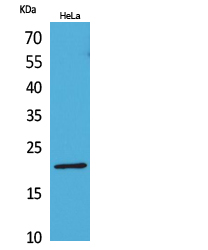![CD3e(RIV9), CF405S conjugate, 0.1mg/mL [26628-22-8] CD3e(RIV9), CF405S conjugate, 0.1mg/mL [26628-22-8]](https://biotium.com/wp-content/uploads/2016/12/CD3-RIV9-CF488A-human-tonsil.jpg)
CD3e(RIV9), CF405S conjugate, 0.1mg/mL [26628-22-8]
BNC040322
ApplicationsFunctional Assay, Flow Cytometry, ImmunoFluorescence, ImmunoPrecipitation, ImmunoHistoChemistry, ImmunoHistoChemistry Frozen
Product group Antibodies
TargetCD3E
Overview
- SupplierBiotium
- Product NameCD3e(RIV9), CF405S conjugate, 0.1mg/mL [26628-22-8]
- Delivery Days Customer9
- ApplicationsFunctional Assay, Flow Cytometry, ImmunoFluorescence, ImmunoPrecipitation, ImmunoHistoChemistry, ImmunoHistoChemistry Frozen
- CertificationResearch Use Only
- ClonalityMonoclonal
- Clone IDRIV9
- Concentration0.1 mg/ml
- ConjugateOther Conjugate
- Gene ID916
- Target nameCD3E
- Target descriptionCD3 epsilon subunit of T-cell receptor complex
- Target synonymsCD3epsilon, IMD18, T3E, TCRE, T-cell surface glycoprotein CD3 epsilon chain, CD3-epsilon, CD3e antigen, epsilon polypeptide (TiT3 complex), CD3e molecule, epsilon (CD3-TCR complex), T-cell antigen receptor complex, epsilon subunit of T3, T-cell surface antigen T3/Leu-4 epsilon chain
- HostMouse
- IsotypeIgG3
- Protein IDP07766
- Protein NameT-cell surface glycoprotein CD3 epsilon chain
- Scientific DescriptionReacts with five invariable CD3 chains designated CD3y, CD3d, CD3e, CD3f, and CD3n with molecular weight ranging from 16-28 kDa. CD3, also known as T3, is a member of the immunoglobulin superfamily that plays a role in antigen recognition, signal transduction, and T cell activation. It is found on all mature T-lymphocytes, NK, T-cells, and some thymocytes. It is expressed, typically at high levels, on peripheral T cells and majority of T cell neoplasms. Thymocytes express CD3 at different level on the cell surface in the course of differentiation and, in cortical thymus, CD3 is predominantly intracytoplasmic. This MAb is particularly useful for induction of T cell activation in vitro and in vivo due to its unusual IgG3 isotype. Primary antibodies are available purified, or with a selection of fluorescent CF® Dyes and other labels. CF® Dyes offer exceptional brightness and photostability. Note: Conjugates of blue fluorescent dyes like CF®405S and CF®405M are not recommended for detecting low abundance targets, because blue dyes have lower fluorescence and can give higher non-specific background than other dye colors.
- SourceAnimal
- Storage Instruction2°C to 8°C
- UNSPSC12352203

![CD3e(RIV9), CF405S conjugate, 0.1mg/mL [26628-22-8] CD3e(RIV9), CF405S conjugate, 0.1mg/mL [26628-22-8]](https://biotium.com/wp-content/uploads/2016/12/CD3-RIV9-CF488A-CF568-PNA-human-tonsil.jpg)
![CD3e(RIV9), CF405S conjugate, 0.1mg/mL [26628-22-8] CD3e(RIV9), CF405S conjugate, 0.1mg/mL [26628-22-8]](https://biotium.com/wp-content/uploads/2016/12/CD3-CF488A-RIV9-PBMC.jpg)
![CD3e(RIV9), CF405S conjugate, 0.1mg/mL [26628-22-8] CD3e(RIV9), CF405S conjugate, 0.1mg/mL [26628-22-8]](https://biotium.com/wp-content/uploads/2016/12/BNUB0322-gel.jpg)







